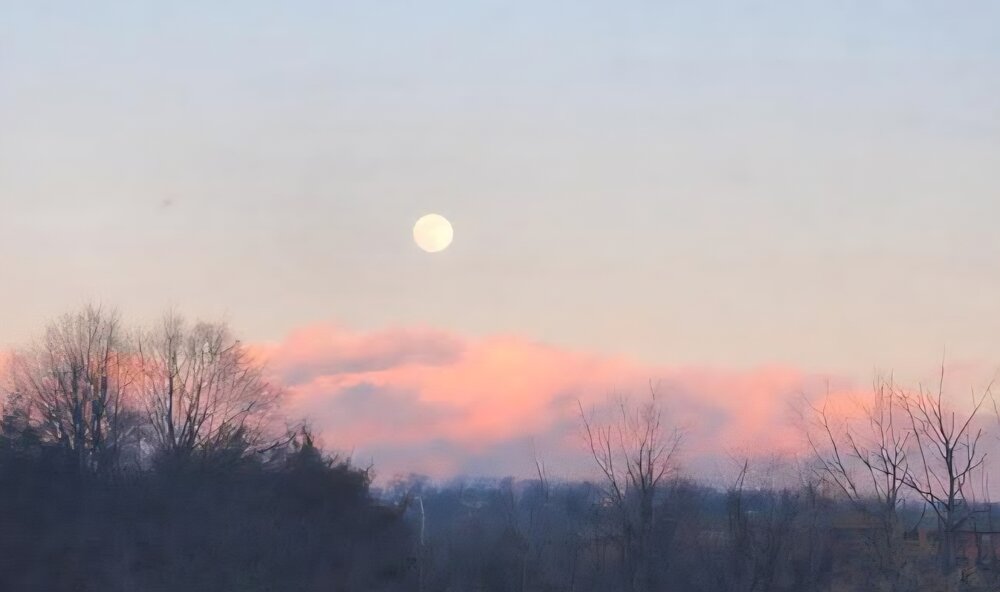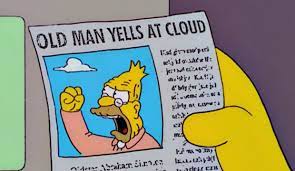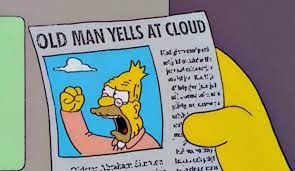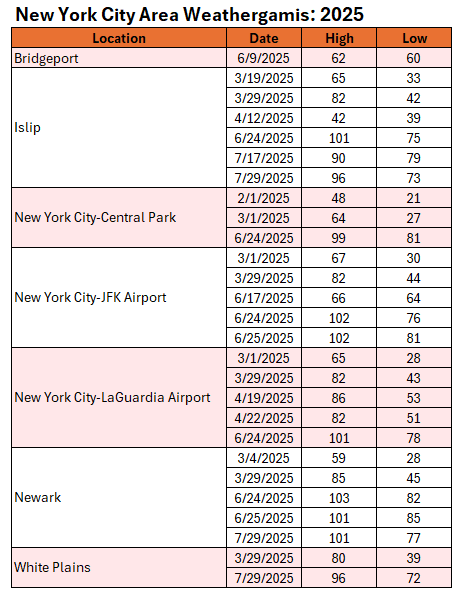-
Posts
1,598 -
Joined
-
Last visited
Content Type
Profiles
Blogs
Forums
American Weather
Media Demo
Store
Gallery
Posts posted by Dark Star
-
-
2 hours ago, the_other_guy said:
My now dead neighbor in Queens when we went out to shovel “nothing special here. just a path.” As a kid, I knew this was extraordinary then. That was really the first in a parade of epic storms that spanned the next 20 years in the NYC area.
and if you lived in Queens back then, you remember that snow removal in New York City was much more primitive than it is now, even though it wasn’t that long ago. A lot less salt was used and the secondary and tertiary streets sometimes took days to get cleared.
we lived on a secondary street in Whitestone and during those big storms we got a plow width and nothing more. Nowadays that would never happen
My favorite storm of all time. 31" here in Garwood NJ. It just kept snowing and snowing, and when the intensity dropped off just a smidge, it ramped up some more!!!
-
1 hour ago, WeatherGeek2025 said:
a bit of snow coming down in midtown right now!
Nary a flurry here in Garwood, cental Union county NJ. Sun just popped out...
-
1 hour ago, Voyager said:
Actually, I'm in the coal region of PA in Schuylkill County. I venture over here to read analysis, but rarely post out of my sub forum.
Generally, we're colder than you guys in the metro, but I live in a row where I'm insulated both left and right, so I only have two exposed walls, but the house is 110 years old, so not a lot of extra insulation. Still, I'm fairly happy with our oil consumption all things considered.
It could be worse. The single home across the street from me sees an oil truck every month in the winter.
My parents were from Shenandoah, PA. Spent many a night sleeping in my Grandparents house upstairs. No insulation, heated only by a coal stove and a coal heater downstairs. No bathtub or shower, just a toilet in the cellar. My parents would tell me of nights where there was frost on the inside of the bedroom walls upstairs. That's why they all had goose down comforters (feather-tiks)...
-
 2
2
-
-
4 hours ago, eduggs said:
This was not a "four to eight inch" snowstorm for the NYC area. The map of NWS snowfall reportsid it was. visually describes the event quite well. Please stop perpetuating this fantasy. Facts matter.
I never said it was. I was disputing that very fact...
-
 1
1
-
-
1 hour ago, bluewave said:
This was a solid 4-8” event for most of the OKX forecast zones from Newark on to the north and east.
506 NOUS41 KOKX 271454 PNSOKX CTZ005>012-NJZ002-004-006-103>108-NYZ067>075-078>081-176>179-280254- Public Information Statement National Weather Service New York NY 954 AM EST Sat Dec 27 2025 ...SNOWFALL REPORTS... Location Amount Time/Date Provider ...Connecticut... ...Fairfield County... 4 NNW New Fairfield 9.4 in 0901 AM 12/27 Trained Spotter 1 E Sherman 8.5 in 0800 AM 12/27 Cocorahs 1 SE Wilton 7.3 in 0807 AM 12/27 Public New Canaan 7.2 in 0800 AM 12/27 COCORAHS 3 SSE Weston 7.1 in 0715 AM 12/27 Trained Spotter Bridgeport Airport 7.1 in 0700 AM 12/27 Official NWS Obs 2 ENE New Canaan 7.1 in 0528 AM 12/27 Trained Spotter Brookfield 6.5 in 0700 AM 12/27 COCORAHS Bethel 6.5 in 0700 AM 12/27 Emergency Mngr Norwalk 6.4 in 0700 AM 12/27 COCORAHS 4 SSE Easton 6.2 in 0600 AM 12/27 Public Ridgefield 2.4 NNE 6.1 in 0700 AM 12/27 COCORAHS Shelton 6.0 in 0700 AM 12/27 COCORAHS Stratford 6.0 in 0700 AM 12/27 COCORAHS Bethel 4.5 SSE 6.0 in 0700 AM 12/27 COCORAHS 1 W Stamford 5.9 in 0605 AM 12/27 Trained Spotter Stamford 1.0 S 5.4 in 0700 AM 12/27 COCORAHS Rowayton 5.2 in 0914 AM 12/27 Public 4 NNW Ridgefield 5.2 in 0903 AM 12/27 Public ...Middlesex County... Durham 8.0 in 0700 AM 12/27 COCORAHS Old Saybrook 2.9 NNE 8.0 in 0700 AM 12/27 COCORAHS Clinton 8.0 in 0645 AM 12/27 Broadcast Media 1 SW Westbrook 7.7 in 0240 AM 12/27 Trained Spotter Higganum 7.0 in 0800 AM 12/27 COCORAHS Middlefield 1.4 W 6.5 in 0600 AM 12/27 COCORAHS ...New Haven County... Wallingford 3.1 N 10.5 in 0700 AM 12/27 COCORAHS 1 NNW Meriden 9.0 in 0350 AM 12/27 Trained Spotter Waterbury 8.5 in 0700 AM 12/27 COCORAHS 1 NW Cheshire 8.1 in 0830 AM 12/27 Trained Spotter 3 ENE North Branford 7.5 in 0915 AM 12/27 NWS Employee 2 NW Hamden 7.3 in 0647 AM 12/27 Public 4 SSE Durham 7.1 in 0200 AM 12/27 Public Madison Center 1.3 N 7.0 in 0700 AM 12/27 COCORAHS Guilford 7.0 in 0700 AM 12/27 CO-OP Observer 3 ENE Branford 6.5 in 0647 AM 12/27 Public Wallingford Center 1.1 N 6.0 in 0828 AM 12/27 COCORAHS 1 NW Ansonia 6.0 in 0531 AM 12/27 Public 1 SW Branford 5.4 in 0700 AM 12/27 Trained Spotter ...New London County... New London 7.1 in 0730 AM 12/27 COCORAHS 5 SSE Salem 7.0 in 0603 AM 12/27 Public Oakdale 6.5 in 0700 AM 12/27 COCORAHS East Lyme 6.5 in 0600 AM 12/27 COCORAHS Niantic 6.5 in 0530 AM 12/27 COCORAHS Uncasville 2.4 NNW 6.3 in 0700 AM 12/27 COCORAHS Mystic 6.1 in 0700 AM 12/27 COCORAHS Old Lyme 6.0 in 0700 AM 12/27 COCORAHS Norwich 6.0 in 0700 AM 12/27 COOP Pawcatuck 5.8 in 0700 AM 12/27 COCORAHS Waterford 5.5 in 0700 AM 12/27 COCORAHS Mystic 5.4 in 0700 AM 12/27 COCORAHS Norwich 4.9 in 0600 AM 12/27 COCORAHS ...New Jersey... ...Bergen County... 2 NNE Franklin Lakes 4.1 in 0911 AM 12/27 Trained Spotter Montvale 1.8 ESE 4.1 in 0800 AM 12/27 COCORAHS Oakland 4.0 in 0800 AM 12/27 COCORAHS 1 N River Vale 3.8 in 0801 AM 12/27 Trained Spotter Tenafly 3.8 in 0730 AM 12/27 COCORAHS Fair Lawn 3.5 in 0830 AM 12/27 COCORAHS River Edge 0.4 NNE 3.5 in 0700 AM 12/27 COCORAHS 1 S River Edge 3.3 in 0720 AM 12/27 Public North Arlington 3.0 in 0830 AM 12/27 COCORAHS Lyndhurst Twp 1.6 NW 3.0 in 0700 AM 12/27 COCORAHS ...Essex County... West Orange Twp 0.6 WNW 3.8 in 0700 AM 12/27 COCORAHS Montclair 3.5 in 0800 AM 12/27 COCORAHS 1 W Essex Fells 3.3 in 0933 AM 12/27 Public 1 WSW Glen Ridge 3.2 in 0730 AM 12/27 Public Maplewood 3.1 in 0830 AM 12/27 COCORAHS 2 NE Springfield 3.0 in 0400 AM 12/27 Public ...Hudson County... Harrison 4.0 in 0442 AM 12/27 CO-OP Observer Hoboken 3.9 in 0700 AM 12/27 Trained Spotter ...Passaic County... 3 NE West Milford 4.2 in 0917 AM 12/27 Trained Spotter Little Falls 3.6 in 0700 AM 12/27 COCORAHS ...Union County... Newark Airport 4.2 in 0700 AM 12/27 Official NWS Obs 1 S Mountainside 3.1 in 0900 AM 12/27 Public 1 NNW Westfield 3.0 in 0911 AM 12/27 Public 1 NW Cranford 3.0 in 0717 AM 12/27 Public 1 NE Union 3.0 in 0200 AM 12/27 Public Clark 2.8 in 0846 AM 12/27 COCORAHS New Providence 2.8 in 0730 AM 12/27 COCORAHS 1 NW Fanwood 1.6 in 0700 AM 12/27 COCORAHS ...New York... ...Bronx County... 1 NNE Fordham 4.3 in 0400 AM 12/27 Public 1 NNE East Tremont 3.0 in 0841 AM 12/27 Public ...Kings County... 1 SSE Williamsburg 4.3 in 0715 AM 12/27 Public Sheepshead Bay 4.0 in 0805 AM 12/27 Public 1 N Bay Ridge 3.1 in 0603 AM 12/27 Public ...Nassau County... Farmingdale 5.0 in 0900 AM 12/27 Public 1 N Syosset 4.6 in 0855 AM 12/27 Trained Spotter 1 SE Malverne 4.1 in 0850 AM 12/27 Cocorahs Massapequa Park 4.1 in 0700 AM 12/27 COCORAHS Massapequa 4.1 in 0700 AM 12/27 Amateur Radio Malverne 0.5 SE 4.1 in 0630 AM 12/27 COCORAHS 1 N Centre Island 4.0 in 0529 AM 12/27 Public 1 SW Levittown 4.0 in 0202 AM 12/27 Public 1 WSW Plainview 3.5 in 0841 AM 12/27 Public Carle Place 3.1 in 0645 AM 12/27 Amateur Radio Herricks 2.9 in 0805 AM 12/27 COCORAHS ...New York (Manhattan) County... Central Park 4.3 in 0700 AM 12/27 Official NWS Obs ...Orange County... 2 SSW Stewart Airport 5.7 in 0724 AM 12/27 Public 4 SSE Chester 5.1 in 0700 AM 12/27 COCORAHS 2 NW Stewart Airport 5.0 in 0628 AM 12/27 Amateur Radio Monroe 5.0 in 0500 AM 12/27 Trained Spotter 3 WNW Warwick 4.0 in 0603 AM 12/27 Trained Spotter Port Jervis 3.6 in 0630 AM 12/27 COCORAHS ...Putnam County... Cold Spring 7.8 in 0700 AM 12/27 COCORAHS Nelsonville 0.3 S 7.2 in 0700 AM 12/27 COCORAHS 2 W Putnam Valley 5.7 in 0605 AM 12/27 NWS Employee ...Queens County... 1 WSW Howard Beach 4.6 in 0701 AM 12/27 Broadcast Media NYC/JFK 4.2 in 0700 AM 12/27 Official NWS Obs NYC/La Guardia 4.1 in 0700 AM 12/27 Official NWS Obs 1 SW Russell Gardens 3.9 in 0801 AM 12/27 Trained Spotter Little Neck 0.3 SE 3.9 in 0800 AM 12/27 COCORAHS 1 NNE Elmhurst 3.7 in 0815 AM 12/27 Trained Spotter 2 S Elmhurst 3.5 in 0715 AM 12/27 Trained Spotter ...Rockland County... Stony Point 5.0 in 0700 AM 12/27 COCORAHS New City 4.2 in 0815 AM 12/27 Trained Spotter ...Suffolk County... Ridge 1.5 SE 8.0 in 0500 AM 12/27 COCORAHS Babylon 7.5 in 0645 AM 12/27 Amateur Radio Orient 7.5 in 0615 AM 12/27 Trained Spotter 1 W Shirley Airport 7.1 in 0914 AM 12/27 Public Mattituck 7.0 in 0840 AM 12/27 Trained Spotter 2 SE Ridge 6.6 in 0904 AM 12/27 NWS Employee Islip Airport 6.6 in 0700 AM 12/27 Official NWS Obs Upton (NWS Office) 6.5 in 0700 AM 12/27 Official NWS Obs 1 WNW East Patchogue 6.3 in 0915 AM 12/27 Public 1 NNE Manorville 6.3 in 0730 AM 12/27 Trained Spotter Baiting Hollow 6.2 in 0700 AM 12/27 COOP 1 NNE Sayville 6.2 in 0700 AM 12/27 NWS Employee 2 NNW Islip 6.1 in 0935 AM 12/27 Public 3 WNW Riverhead 6.1 in 0922 AM 12/27 NWS Employee 1 NNW Remsenburg-Speonk 6.1 in 0740 AM 12/27 Public Center Moriches 5.9 in 0600 AM 12/27 COCORAHS 1 WNW Sound Beach 5.8 in 0700 AM 12/27 NWS Employee Stony Brook 5.8 in 0700 AM 12/27 Trained Spotter 1 SSE Bohemia 5.6 in 0550 AM 12/27 Trained Spotter Setauket-East Setauket 2.1 W 5.5 in 0700 AM 12/27 COCORAHS Blue Point 5.4 in 0818 AM 12/27 Cocorahs Blue Point 0.3 ENE 5.4 in 0800 AM 12/27 COCORAHS 1 N Smithtown 5.3 in 0920 AM 12/27 Trained Spotter Deer Park 1.0 NE 5.3 in 0700 AM 12/27 COCORAHS Islip Terrace 0.5 W 5.3 in 0700 AM 12/27 COCORAHS Deer Park 5.3 in 0600 AM 12/27 Trained Spotter Bay Shore 5.2 in 0700 AM 12/27 COCORAHS 1 WSW Poquott 5.2 in 0425 AM 12/27 NWS Employee Sayville 5.1 in 0700 AM 12/27 NWS Employee 1 ESE East Patchogue 5.1 in 0541 AM 12/27 NWS Employee 1 ENE Commack 4.5 in 0807 AM 12/27 Broadcast Media 1 SW Mount Sinai 4.5 in 0739 AM 12/27 Trained Spotter 1 S Nesconset 4.4 in 0933 AM 12/27 Public Mattituck 1.4 SSE 4.2 in 0700 AM 12/27 COCORAHS Amityville 4.0 in 0800 AM 12/27 COCORAHS ...Westchester County... Armonk 6.4 in 0200 AM 12/27 Trained Spotter Shrub Oak 6.0 in 0600 AM 12/27 COOP Shrub Oak 6.0 in 0600 AM 12/27 COCORAHS 1 N Port Chester 5.9 in 0857 AM 12/27 Public 2 NNE White Plains 5.8 in 0800 AM 12/27 Trained Spotter 1 SE Croton-on-Hudson 5.7 in 0800 AM 12/27 Trained Spotter White Plains 5.4 in 0800 AM 12/27 Amateur Radio South Salem 5.4 in 0715 AM 12/27 COCORAHS Armonk 5.0 in 0800 AM 12/27 COCORAHS Thornwood 5.0 in 0800 AM 12/27 Amateur Radio 1 E Scarsdale 4.5 in 0800 AM 12/27 Public 1 SSE Greenville 4.3 in 0800 AM 12/27 Public Mount Vernon 3.0 in 0800 AM 12/27 Amateur Radio 1 E Pelham Manor 2.8 in 0736 AM 12/27 Public
Yex, except Union county, NJ
-
1 hour ago, bluewave said:
Your area missed out on the 4-8” that most of us got due to the H700-850 warm nose and fast flow pushing the dry slot in so quickly from the west.
or perhaps that the system was just a tad too far north and the stronger dynamics allowed for less precipitation, leading to the warm nose to win out?
-
On 1/2/2026 at 12:57 PM, SnowGoose69 said:
I think more a general rule that applies is if January is way above normal there are almost no cases of the winter being snowy. That is really the only rule I think that applies. I just do not know though how many below normal Decembers with above normal snow saw torch Januarys though. Off memory I don't recall any, maybe 2005-06? 1989 obviously was crazy cold but had no snow albeit we had 1 very close call where like POU/BDL/BDR saw 5-10 inches so these things are somewhat relative as close calls either way could have resulted in years fitting/not fitting into analogs.
That's why you can "cancel" winter around the 3rd week in January after already experiencing mostly un-winterlike conditions. By the end of the 3rd week of January, if no cold air is apparent in the 2 week long range, you can be pretty sure winter is over. February is regarded as the snowiest month, and you can have snowstorms in late February into March, but winter is normally waning by the end of February. To many, winter is a period of at least of 6 weeks of seasonably cold weather with some systems that produce(d) frozen precipitation. Any snow that does fall is slow to melt. Local small ponds freeze. I know, we have this "discussion" almost every year.
-
 1
1
-
 1
1
-
-
-
58 minutes ago, Volcanic Winter said:
Got down to 16, then came up to 22 and is now snowing!
Awesome winter day with that squall this morning. Never got warmer than 27 after that.
Frankly this might be my favorite winter day in a long time, monster storm not required.
Same conditions to your southwest here along the western border of Toms River. It’s getting us both atm.
Absolutely beautiful out right now.
Pleasant dusting in Garwood NJ...
-
 1
1
-
-
2 hours ago, psv88 said:
Miserable day. I came down with that cold that’s going around to start the year off the right way.
A thaw would be nice. A few days near 55 with no wind please
Sounds like you are ready to retire to Florida?
-
48 minutes ago, Dan76 said:
Roads are bad saw a brand new mustang go right into a pole.
I've heard of deer running into cars, but horses running into Slavs?
-
 4
4
-
 1
1
-
-
-
30 minutes ago, wthrmn654 said:
Hard to say nws thinks so.
However, strong frontogenesis, marginal instability, and gusty west winds along and just ahead of the cold front will create a good chance for a line of moderate to heavy snow showers, and perhaps a snow squall. Latest CAMs are in good agreement at this time. The cold front will quickly move across the area, passing eastern LI/SE CT 8-9 am.
A quick coating of snow is not a snow squall. NYC folks don't really know what a whiteout or snow squall actually looks like.
-
 1
1
-
-
2 hours ago, wthrmn654 said:
Snow squalls too
No actual squalls within 10 miles of NYC anyway. Maybe Susses County if they hold?
-
2 hours ago, North and West said:
What’s TNH? I swear people just make acronyms up now. I hope we look into OPS+ and WAR.
.I know what OPS is, but anything newer, I have no idea. At one time, it would all have been in my brain.
-
 1
1
-
-
3 hours ago, Stormlover74 said:
Plenty of years had good Decembers followed by cold and dry or mild January's before a backloaded winter. 2002-03. Even 00-01 didn't do much until 3rd week of January after the nye storm. Most years have a break of at least a few weeks
True dat. The January Thaw is not a myth.
-
42 minutes ago, MJO812 said:
Thats what happened with the upcoming pattern in the first 2 weeks. People were calling for a huge storm due to the retrogading block but thats not going to happen. Thats what happened last winter also.
I can't forsee what will happen in 2 weeks, but I am optimistic based on the relatively cold and active pattern that we are presently experiencing. Of course, the ugly Pacific jet just doesn't quit...
-
-
1 hour ago, CPcantmeasuresnow said:
35 degrees light rain continues. Amazing when it's liquid how the radar keeps filling in to the west.
Snow pack still pretty solid. If it can get through the rest of the day we should have a solid chuck of snow and ice that should withstand the December early January sun.
Though light, snow kept falling Saturday, even though the main system was already offshore...
-
-
16 hours ago, qg_omega said:
Climate is dynamic and ever changing, 1840s is not relevant
I don't know. I feel that all recordable history events are valid and relevant. I am in the minority that average temperatures should factor in from whenever we first started recording. We use maximum and minimum temperatures from inception...
-
56 minutes ago, ag3 said:
I don’t believe they clear the board every time they measure. That was the old way every 6 hours.
Now, I believe it’s clear the board after 24 hours or when there is a change of precip type.
Every 6 hours was silly. The actual snowfall is what is on the ground (or measuring surface), rather than a theoretical depth not accounting for gravity or other physical properties. And I believe there is an average based on a differernt number of spots, so as to account for variations due to drifting, or is this just for larger snow falls?
-
 1
1
-
-
54 minutes ago, CPcantmeasuresnow said:
Newark airport measures 4.2 inches and LGA also 4.2 inches and right in between the two Central Park, for once, correctly measures 4.3 inches and now someone on social is suddenly concerned Central Park over measures. Amazing.
I received 2.5" (maybe 2.8" figuring in compression), so I would naturally assume Central Park was not going to excced central Union County NJ (about 10 miles south/southwest of Newark Airport). But the storm was farther north and east, so the CPK measurement is not suspect, in my opinion...
-
 2
2
-
-
4 hours ago, Stormlover74 said:
Part of it is we all look at snow maps instead of soundings but yes the gfs and other colder models kept showing snow in areas that started as sleet and then got dry slotted
I still contend that the lack of snow in areas such as Union county NJ was that the center for the storm was too far north. Areas north and east of NYC got the jackpot. Without enough lift in my area, the storm dynamics fizzled. Had the storm been more intense, it would have easily overcome the "warm nose" and "dry slot". To reiterate an earlier post, we are mainly disagreeing over semantics.








January 2026 OBS and Discussion
in New York City Metro
Posted
It has gotten complicated. PSEG sold off a lot of their power plants. They kept the transmission end of the business. Natural gas is the cleanest of the fossil fuels, and is now renewable.